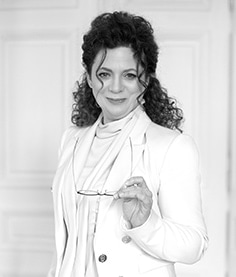2020 was not an easy year. It brought extreme moods, new perspectives, sudden opportunities. Sales which seemed difficult at first, turned out to be easy and quick; exiting an investment suddenly became possible due to growth in sector specific demand. This does not mean that 2020 was not a stressful year, on the contrary, it elicited many emotions in investors and 180-degrees turns! How investments were assessed in 2020 changed dramatically as early as in Q1, that is immediately after the first reactions to the pandemic. Each investment was analysed through the lens of a new reality. Not surprisingly 2020 can be summed up as an investment year with emphasis on securing capital. Here, we are looking at what happened in the 6 main investment areas.
- INVESTMENTS IN BULLION. 2020 RECORDED THE HIGHEST PRICE OF GOLD IN THIS HALF-CENTURY (IN AUGUST 2020 THE PRICE OF GOLD WAS 2,067.15 USD/OZ)
In March 2020, we saw investors rush to invest in precious metals. The value of declared precious metal acquisitions by our customers increased by 100% compared to 2019. However, physical metals still only represent less than 1% of overall portfolios value (globally, the value of bullion in private investors’ portfolio is 3%).[i] 2021 promises an even greater appetite for gold and silver; this seems to be the correct approach given the current mood and situation worldwide. When making such investments, it is not insignificant whether one buys physical bullion or the paper equivalent of precious metals. It is also worth considering whether the purchase is made in Poland or overseas, as well as the access arrangements to the bullion, and whether such a purchase should be declared or not.
Bullion still only constitutes a small proportion of investment portfolios of wealthy individuals and tends to give way to other investments classes such as art or real estate. All these investments are of course long-term investments. That said, investing in gold should be considered as the most liquid option, relatively speaking, assuming no unexpected regulatory constraints. - INVESTMENTS IN REAL ESTATE HOLD VALUE DUE TO THEIR REPUTATION AS THE BEST CAPITAL INVESTMENT
Real estate investments are still seen by clients as their preferred alternative to any other investment. Although rental prices have been falling since the beginning of the year, property prices have remained high or gone up. Even real estate agents have been at times surprised by their levels. At present investors’ demand for real estate is primarily due to the need to retain capital rather than the income generated from those investments. Many investors expect a correction in the real estate market.
Currently, the real estate proportion in our clients’ portfolios is between 10-30%[ii]. Due to the expected adjustment in the property market, which could be caused by the introduction of a new tax, some of our clients have been scaling down their exposure to real estate.
Some clients have been scaling down their property portfolios due to the expected price adjustment in this market. This correction could possibly be triggered by the expected introduction of cadastral tax. - INVESTMENTS IN NEW TECHNOLOGIES – TRCHNOLOGY LEAPT FORWARD BY AT LEAST A DECADE IN 2020 – IT’S NOT WONDER INVESTORS ARE FOCUSING HEAVILY ON THIS INDUSTRY SEGMENT
Before Covid, investment opportunities available in Western Europe and the US were heavily overvalued. The world was looking for new markets and directing its gaze to Central Europe, the Middle East and the Far East. Today, all eyes are back on US companies, that said Chinese technology companies have also attracted a lot of attention. In this context Central Europe, including Poland, continues to jostle for a priority position – after all, every portfolio needs to be diversified! On top of that, the past year has changed people’s perception in how to access capital and investment globally, which means that today Poland represents a viable alternative to investors from Asia or America. Polish start-ups have been growing successfully and taking leading positions in global markets.
Globally, the average private equityelement of a HNWI’s portfolio is around 8%[iii] (60% of our clients) of total investment. Public equities, on the other hand, amount to over 20% of private portfolio investments worldwide.[iv] Technology companies lead the way in public markets. - THE 2020 STOCK MARKET RODE A WAVE OF VOLATILE EMOTIONS – ALTHOUGH DUE TO THE TECHNOLOGICAL LEAPS AND BOUNDS, AS WELL AS THE FACT THAT TECHNOLOGY DOMINATED THE MAIN INDICIES IN THE US – 2020 WAS A YEAR OF RECORDS – E.G. TESLA SHARES ROSE BY 700%
The stock market also provided investors with a lot of excitement in 2020. In the second half of the year, the U.S. stock market rose sharply (Nasdaq by +41%)[v]. European markets didn’t rise as spectacularly as the US ones, which is why the latter received most of the attention. Some investors are sceptical of the US Dollar, which is why we see a trend in portfolio diversification into Asian companies (e.g. Alibaba, Xpeng, NIO, etc.). It is worth highlighting that optimism about the American market is much more palpable following the US presidential election and the swearing-in of the new president. - INVESTMENTS IN ART. IN POLAND 2020 ENDED WITH A RECORD TURNOVER INCREASE OF PLN 85 MILLION COMPARED TO 2019
In 2020, the artwork market achieved a record PLN 380 million. This represents a nearly 30% increase in turnover compared to the prior year. The jump in sales value – by as much as PLN 85 million – looks impressive. It is the first time that such spectacular growth occurred, never before has the Polish art market been so strong and bullish.[vi] Towards the end of the year, the fourth quarter has traditionally been the strongest with some sensational trades. At the beginning of December a painting by Wojciech Fangor – M22 from 1969 – was auctioned off for PLN7.3 million by the DASA Unicum auction house. This was also the highest price for a single paitning in the history of Polish auctions. In the ancient art segment, a new sales record was set on 2 June 2020 at the Polswiss Art auction house. A masterpiece by Jan Matejko, the Portrait of Professor Karol Gilewski from 1872, sold for PLN 6,962,000.[vii] It is now the highest achieved price for an ancient art piece.
Investments in artwork are mainly the domain of private individuals. Such an acquisition reflects the subjective need to surround oneself with beautiful things, sometimes dictated by the desire to mark one’s social status. Objectively however, investing in artwork can provide a quick injection of money for life various situations. Art doesn’t lose its value. At worst the value of a renowned artist’s piece can plateau. Drops in prices are rarely seen in the art market. - COLLATERALISED DEBT INVESTMENTS
With falling interest rates, many entrepreneurs were happy to use collateralised debt investments. It is important to assess the liquidity of the collateral, the hedge mechanism and to analyse, in advance the health and financial condition of the company/partners (source of debt repayment). When looking at the financial health of an enterprise, the industry should be carefully considered and chosen, all the while taking into account possible significant changes and the imminently expected crisis in 2021.

In today’s world it is not easy to make investment decisions regarding capital collateral. Every investor as well as their advisor, has an opinion typically based on their personal investment experience. It is also worth remembering that the world of today is completely different from what we used to know. It is therefore important not to make hasty decisions when revising one’s investment strategy. Changes should be preceded by an analysis of global trends in the financial markets. Our clients take advantage of this expertise most often in Luxembourg, Switzerland and the USA. Exposing oneself to new risks shouldn’t come before appropriate groundwork has been carried out, especially today when acting in a completely new environment. By adding one’s own investment experience, an informed decision can be made (with full awareness of the potential risks and mitigating measures).
[i] https://strefainwestorow.pl/artykuly/inwestycje-alternatywne/20201216/ceny-sztuki-rosna-pandemia
[ii] https://strefainwestorow.pl/artykuly/inwestycje-alternatywne/20201216/ceny-sztuki-rosna-pandemia
[iii] https://strefainwestorow.pl/artykuly/inwestycje-alternatywne/20201216/ceny-sztuki-rosna-pandemia
[iv] https://strefainwestorow.pl/artykuly/inwestycje-alternatywne/20201216/ceny-sztuki-rosna-pandemia
[v] https://www.nn.pl/aktualne-komunikaty-inwestycyjne/podsumowanie-2020-na-rynkach-akcji.html
[vi] https://artinfo.pl/artinformacje/artinfo-pl-oglasza-wyniki-rynku-sztuki-za-2020-rok
[vii] https://artinfo.pl/artinformacje/artinfo-pl-oglasza-wyniki-rynku-sztuki-za-2020-rok



